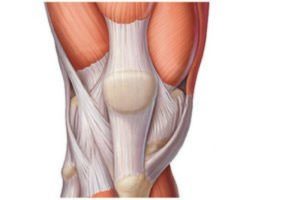A tendon is a special structure consisting of collagen fibers that attaches muscles to the bones. Tendons transmit muscle force to the skeleton and play an important role in providing movement. Due to their collagen composition, these structures are very strong and have little stretch. Sometimes there is a danger of damage to the tendons of the limbs. Such trauma, if ignored, has a number of dangerous consequences. Can a tendon heal and how to treat ruptures? Experts of Ladisten Clinic answer these questions.

Types of injuries
Tendon injuries include sprains or ruptures. Sprains occur as a result of excessive effort, for example, when practicing sports or doing physical work. Pathological sprains are also distinguished. They arise as a result of arthrosis or arthritis, when the tendon loses its strength. Sprain of more than half the thickness of a tendon is called a rupture.

From the point of view of orthopedics, ruptures are the most dangerous. They may be:
- complete – the tendon is completely torn from the bone;
- partial – incomplete rupture.
Also such types are distinguished:
- open rupture. It occurs as a result of open trauma – fracture, cut, etc. In addition to the tendon, nerves and blood vessels are damaged;
- closed rupture. In case of such injury, the skin remains intact.
Depending on the localization, there are:
- tendon rupture in the leg;
- tendon rupture in the arm;
- shoulder tendon rupture
and other injuries.
Diagnostics
Injuries of the limb tendons are primarily diagnosed by collecting medical history. The main symptoms are:
- a typical “click” and sharp pain at the place of rupture in the moment of injury;
- swelling in the damaged area;
- impairment of motor function. A person cannot bend and unbend a finger if there is a rupture of the finger tendon, he or she cannot stand on tiptoes if the Achilles tendon is damaged, etc.;
- deformation or numbness of the limbs and fingers/toes.
To confirm the diagnosis, doctors prescribe to do:
- an X-ray (not always informative);
- an ultrasound;
- an MRI scan.
What happens if the injury is not treated?
The consequences of a ruptured tendon can be extremely unpleasant:
- constant pain that is caused by “tubercles”. These structures are formed in case of improper healing. The tubercles increase friction and cause chronic inflammation;
- damaged nerves cause numbness and tingling sensations in the limbs;
- a tendon that has grown back improperly can be damaged in case of the slightest load on it. Achilles tendon injuries are especially dangerous. There is no guarantee that the patient will be able to return to the previous physical activity.
Therefore, injuries of the limb tendons should be treated as soon as the injury is found.
How to treat it
A partial tendon rupture can be treated conservatively with a plaster cast. Unfortunately, this method is not always effective. A scar is formed in the area where the tissues have grown back.
Injuries of the limb tendons are treated at Ladisten using modern microsurgical technologies. Surgery is the only way out if the tendon has ruptured completely. It will not grow together on its own. Often, the nerves and blood vessels that adjoin it are also affected. Traumatic surgeons suture all structures under anesthesia and fix the limb with plaster casts until they are grown back completely. In some situations, tendon repair or lengthening is required.
The time needed for the tendons to grow together after surgery depends on the severity of damage and the prescription of injury. On average, full recovery can take 1.5 to 4 months.
Rehabilitation of tendon ruptures in fingers, toes or shoulder includes additional manipulations. These are exercise therapy, massages and physiotherapy. Ladisten offers a full range of procedures which are carried out using modern equipment and under the supervision of qualified doctors.
Sourses
- Unzhakov V.V., Bersnev V.P., Kokin G.S., Orlov A.Yu., and Izvekova T.O. “Reoperations in patients with consequences of combined injuries of nerves and tendons” Acta Biomedica Scientifica, no. 6, 2006, pp. 98-100.
- Popov, G.I. Biomechanics of motor activity: textbook. For stud. institutions of higher. prof. Education / G. I. Popov, A. V. Samsonova. – M .: Publishing Center “Academy”, 2011. – 320 p. (Ser. Bachelor degree).
- Khoroshkov, Yu.A. Khoroshkov Yu.A. Ultrastructural bases of strength of muscle-tendon connection // Mechanics of polymers, 1975. – Issue 4. – S. 626-628
Ladisten
Average rating: 0 reviews 

 Ru
Ru Uk
Uk
